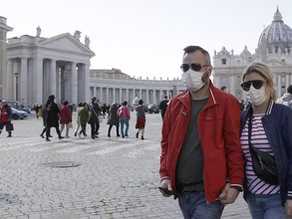The Impact of COVID-19 on Tourism Industries Worldwide

We all are familiar with the fact that the travel and tourism industry makes up a big part of the world’s economic activity and also that due to restrictions on traveling how much this prospering industry has come to stand at the bottom. We all make plans to go to attractive places every year and while we think that it is for sole fun, it is indirectly benefiting a lot of daily wage workers and not only our traveling agent. Besides it provides local residents and of course many startups and mega travel and tourism companies with job handlings of a hotel manager, spa manager, event & conference organizer, executive chef, tour guide. Now this industry has almost doomed because of the unfortunate pandemic. Source: World Travel and Tourism Council We know that the impacts are deep and will leave scars that call for change in the travel industry, but how is it country and continent wise? We’re going to look at the overall impact of the pandemic on these places and how they are affected. The United States Usually crowded places looked abandoned during lockdown The USA is the only country to gain much from the profits of travel and tourism which is a country also one of the worst-hit by this pandemic. The revenue generated from tourism in 2019 in the US was almost $210.7 billion which is even more than half of what is earned by Spain. As it became the major hotspot for COVID-19, all traveling facilities have been shut down for good. But this good decision is rather against the employees in the sector of travel and tourism. The famous airlines American and United suffered a total loss of $2.24 billion and $1.7 billion respectively in the first quarter of this year and the people’s job is at stake if this industry doesn’t open after the month of October. Although the CEO of American Airlines gave hope that it can be avoided depending upon how fast the airline companies open up. According to an article published by Forbes, “USA can face a loss of $910 billion due to shut down of the travel industry, which is seven times the loss due to the attack of 9/11.” The USA travel association which acts as a support system for travel agencies predicted that 4.6 million jobs could be lost in just this industry. “The coronavirus crisis is hitting the travel economy hard, and it’s also hitting fast,” said the association’s president and CEO Roger Dow in a statement. Tourism Economics found that one out of every ten citizens of the USA is associated with the travel job and if this situation prevails, the national unemployment rate is surely going to rise. But to combat the situation for now the association introduced CARE Act and funded travel organizations with relief packages. Check out this blog on the impact of COVID-19 on tourism by India City Blog. Europe The busy roads of European cities are mostly still lying empty The collection of paradise lies here, in Europe. From westernmost Portugal to far east Ukraine, every country in Europe is worth a watch. That’s the prime reason why countries like France, Spain, Italy, the United Kingdom, and Turkey remain top destinations among the list of every enthusiastic traveler. In 2018, about 713 million people visited Europe. Now due to the spread of the deadly coronavirus, no one is visiting these countries and we can only imagine the worsening of the situation. But many airline companies in Europe like EasyJet and Ryanair are looking forward to opening their airports in June for travelers because of the incurred losses and to compensate for it. What is more significant here is the loss of the tourism industry of Europe. The circumstances are similar to World War II. Commissioner of Internal Market of European Union (EU), Thierry Breton said, “Tourism was the first sector to be hit by the coronavirus and I am sure that it will be the slowest to recover and come out of this phase”. It is rather hard to imagine how the authorities of museums, beaches, parks, and restaurants would be dealing with this condition. Due to the shut down of these points, a loss of $300 to $435 billion is estimated, even as these countries slowly recover. The tourism industry of the EU gains as much 550 billion euros every year which contributes to a major part of their GDP. The direct and indirect jobs that this industry provides to these states sums up to 26.6 million. It was one of the fastest-growing industries where investments used to be high. The part of Europe which is mostly going to be affected is Southern Europe as a major sector of economy dwelled upon this, like Greece where about 23.4% of the population worked under the tourism sector. The main blessing, in this case, was that the European states gained enough US dollars from foreign countries that exceeded the spending of the government on different aids like building up schools, hospitals, universities, etc. Now instead of spending on these necessities, all the government’s funds are going into building better health infrastructure and saving it’s peoples’ lives, as it should. Several steps have been taken by the EU to support the travel and tourism industry as they are in the hands of agony due to uncertain futures. Measures like liquidity support, fiscal relief, and an easing of state aid rules, as well as the temporary suspension of EU rules on airport slots to avoid empty flights, have been taken. On May 13, the EU passed out guidelines and recommendations on travel and transport to help the countries of the EU to resume their airline services to reopen travel and tourism businesses. The Brussels and the EU state members have rolled out 200 billion euros spending programs which constitute 1.5% of their GDP to help the

